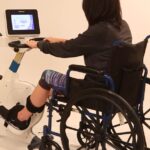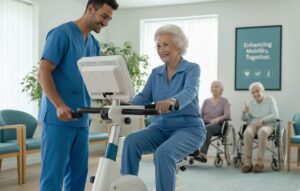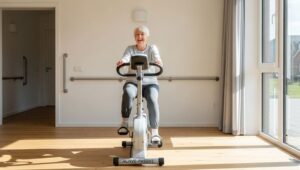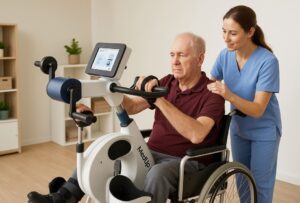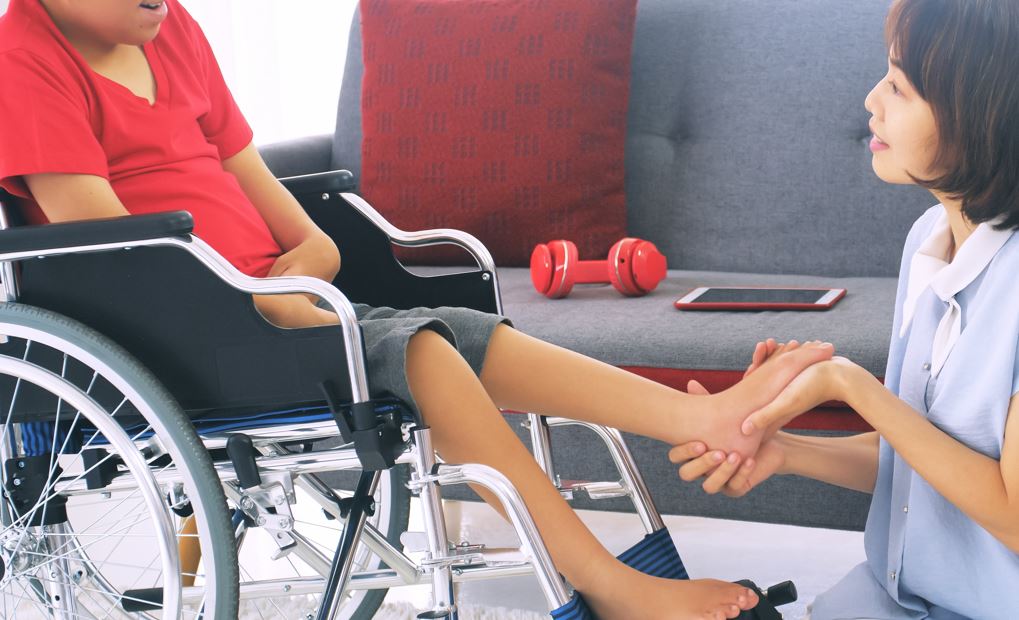
For those living with cerebral palsy, tight muscles and poor coordination is a major part of everyday life. Unfortunately, it can be difficult to effectively remedy these day-to-day struggles with spasticity. One of the most common practices when it comes to helping a cerebral palsy patient cope with their excessively tight muscles is to use an active-passive cycle trainer for both their arms and legs.
What is Cerebral palsy?
Cerebral palsy, or CP, is a brain injury that usually occurs before birth or shortly thereafter and is characterized by certain movement disorders. The category and severity of these movement disorders can vary from one patient to the next; however, they usually include stiff and weak muscles, poor coordination and sometimes tremors. Some patients may also experience struggles with their vision, hearing, speaking and swallowing.
Cerebral palsy is a relatively common disability, affecting around 2 to 3 in 1000 children in Canada.
Spasticity and cerebral palsy
The majority of children with cerebral palsy have a sub diagnosis of spastic CP. This means that the muscles in their arms, legs and body are constantly stiff and tight, causing their movements to be awkward and uncoordinated. Spasticity can greatly affect a person’s ability to care for themselves so many CP patients require support in their day to day lives.
Spasticity most commonly affects the calf muscle in patients, resulting in their toes being pulled downwards into a perpetual point. Thigh muscles are also commonly affected, with inner thigh tightness pulling the legs towards each other. This combination will lead to an uncomfortable swinging gait where each foot crosses in front of the other with each step.
In the arms, CP patients can experience extreme tightness in their fingers, wrists and elbows. This leads leads to their arms being drawn in towards the body.
Benefits of active-passive stretching for CP patients
Care teams are learning that for many patients, taking an active or passive role in their stretching routine can help ease the feelings of tightness and stiffness that are characteristic of CP. Just as an able-bodied person would experience, stretching a tight muscle typically leads to some relief and can increase range of motion. While it’s not clear whether active stretching will lead to permanent improvements in spasticity and movement for CP patients, it has been shown to offer relief and symptom maintenance.
Using an active-passive training device (APT) with children who have cerebral palsy can help them maintain a stretching routine, even on days they don’t feel up to it. Although there is no cure for cerebral palsy, active-passive training can lead to a number of benefits including:
- A reduction in spasms
- Improved coordination and muscle control
- Better ability to walk and balance
- Reduce joint stiffness and improve joint mobility
- Improve muscle strength, especially when it comes to walking
- Maintains circulation
- Improves metabolism
Features of active-passive cycle training
One popular version of an active-passive training device is the MeupV2 cycle trainer. This advanced cycle trainer is suitable for both in home and in physiotherapy and care settings. It’s designed specifically to support patients experiencing muscle spasms. It allows users to easily incorporate a stretching routine into their daily routines to improve quality of life. Consistent therapy may relieve chronic muscle tension.
The unit is similar to a stationary bike, however, it features pedals for both the hands and feet. Users can choose to focus on their arms or legs and using one of the 4 included modes, can select the level of assistive support. The cycle can be completely motor driven or include some level of assistance.
Several of the built-in features are ideal for anyone suffering from spasticity, particularly those with cerebral palsy.
Multiple support modes
With 4 different support modes including passive, assisted, active and isokinetic, users are able to choose exactly how much support they need on a given day. This helps the treatment to be customized specifically to the needs of the patient, allowing for more opportunity to effectively treat muscle tightness and spasms.
Symmetrical training
As you’ve likely come to know with right- and left-handed people, it’s common for one side of the body to be stronger than the other. The MedupV2 trainer allows each side of the device to be customized in order to provide balanced training to the user.
Comprehensive feedback
With feedback provided immediately on the trainer, the user can see exactly how they’re doing in each session as they go.
Quiet and stable
The servomotors that the MedupV2 bike uses are designed to offer extremely quiet operation, allowing the trainer to be used anywhere in the home. Its sturdy and stable construction will ensure all users are able to use it safely.
Active-passive training helps CP patients thrive
Although there is no cure for CP, including active-passive training into a daily routine can allow patients to feel some relief from their tight muscles. A tool like an active-passive cycle trainer can encourage users to have fun with their treatment, especially when they are young!

